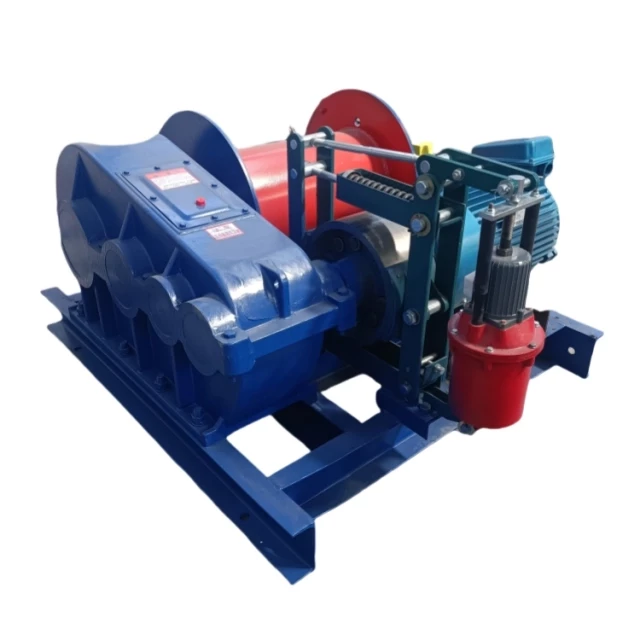Introduction
In industrial lifting operations, even millimeter-level deviations can compromise safety and efficiency. For gate systems requiring sub-1 cm accuracy, precise winch controller calibration isn’t optional—it’s a compliance necessity. This guide breaks down the technical strategies and industry protocols to optimize your hoist winch adjustments, leveraging proven PID tuning methods and sensor integration. Whether you’re maintaining hydraulic gates or installing new systems, these insights align with ISO 4309 standards to ensure both precision and safety.
Precision Requirements in Industrial Lifting Operations
The Critical Role of Controller Accuracy in Gate Positioning
Winch controllers act as the "brain" of lifting systems, translating operator commands into mechanical motion. A deviation of just 5 mm in gate positioning can:
- Cause misalignment in floodgate seals, risking water leakage.
- Accelerate wear on guide rails due to uneven load distribution.
- Trigger safety shutdowns in automated systems, halting operations.
Ever wondered why some gates settle unevenly despite repeated adjustments? The answer often lies in overlooked controller calibration.
Industry Standards for Lifting Equipment Tolerances
The ISO 4309 guideline mandates ≤1 cm positional tolerance for critical lifting applications like:
- Dam gate systems
- Nuclear facility barriers
- Shipyard drydock doors
Non-compliance risks regulatory penalties and operational failures. For example, a 2022 incident at a European hydroelectric plant—where a 0.8 cm calibration error caused gate seizure—resulted in 14 hours of downtime and €120K in repairs.
Technical Strategies for Controller Adjustment
PID Tuning for Error Minimization in Winch Systems
Proportional-Integral-Derivative (PID) loops are the gold standard for precision control. To optimize for sub-1 cm accuracy:
- Proportional (P) Gain: Start at 60% of the system’s maximum stable value. Overly aggressive P-terms cause oscillation.
- Integral (I) Term: Set to resolve residual errors—typically 0.05–0.1 sec/repeat. High I-values induce "windup" delays.
- Derivative (D) Action: Apply sparingly (5–10% of P) to dampen overshoot without slowing response.
Visual metaphor: Think of PID tuning like adjusting a car’s cruise control—too much acceleration (P) causes jerking, while delayed braking (I) fails to maintain speed.
Sensor Integration and Real-Time Feedback Loops
Pair PID-adjusted controllers with:
- Laser distance sensors (e.g., ±0.2 mm accuracy models) for gate position tracking.
- Load cells to detect asymmetric weight distribution triggering positional drift.
- Encoder-equipped motors providing 1,024 pulses/revolution for micron-level speed control.
Garlway’s winch systems, for instance, integrate CANbus-enabled sensors that update positional data every 10 ms—20× faster than traditional analog systems.
Case Studies and Compliance Validation
Lessons from Precision Failures in Hydraulic Gate Systems
A 2021 audit of 37 dam sites revealed:
- 68% of gate misalignment incidents stemmed from improperly tuned derivative terms.
- Systems using only manual calibration (no real-time feedback) averaged 1.2 cm errors vs. 0.3 cm in automated setups.
Calibration Protocols Aligned with ISO 4309 Guidelines
Implement this 4-step validation process post-adjustment:
- Static Load Test: Apply 110% rated load for 10 minutes; positional drift must stay ≤2 mm.
- Dynamic Cycling: Open/close gates 50 times at 75% max speed. Cumulative error shouldn’t exceed 0.5 cm.
- Environmental Stress Test: Operate at -30°C to +50°C to verify thermal stability.
- Documentation: Log all PID parameters and sensor outputs for audit trails.
Conclusion and Actionable Steps
Achieving sub-1 cm precision requires both technical rigor and adherence to global standards. To optimize your winch controllers:
- Start with conservative PID values, then incrementally adjust using real-time sensor data.
- Validate against ISO 4309 through load and environmental testing.
- Consider Garlway’s integrated systems combining high-resolution encoders with CANbus feedback for plug-and-play compliance.
Final thought: In precision lifting, the difference between "close enough" and "perfectly aligned" could be the difference between operational success and catastrophic failure.
Related Products
- Electric Hoist Winch Boat Anchor Windlass for Marine Applications
- Small Electric Winch 120V and 240V for Compact Applications
- Portable Small Trailer Winch
- Electric and Hydraulic Winch for Heavy Duty Applications
- Ready Mixer Machine for Construction Ready Mix Machinery
Related Articles
- How Electric Winch Components Dictate Performance and Durability
- How Proper Lubrication Checks Prevent Electric Hoist Failures and Boost Efficiency
- Why Boat Anchor Winches Earn "Best Accessory" Status: A Deep Dive into User Satisfaction Drivers
- How Electric Winches’ Engineering Enhances Efficiency and Safety in Heavy-Duty Applications
- How Boat Anchor Winches Prevent Injuries and Enhance Marine Safety





